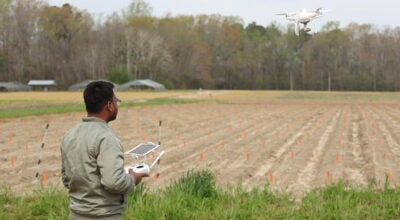It’s officially cold
Published 10:29 pm Monday, January 4, 2010
It’s official. It’s cold today, it’s going to be cold tomorrow and whether you like it or not, it’s going to be cold next week. In short, you need to make sure you take care of your pipes, your pets, your plants and yourselves for another week or two of below-normal temperatures.
“It looks chilly for at least another week,” National Weather Service meteorologist Timothy Gingrich said Monday. “Normal temperatures this time of year for the area are in the upper 40s to 30s. What we’re seeing right now are temperatures in the lower 30s and 20s with a wind chill that brings it to the teens and single digits.”
Gingrich attributed the low temperatures to two weather patterns in the northern part of the country.
“There is a strong low-pressure area over the northeast of Maine and one building in the Minnesota and Iowa area,” Gingrich said. “Between the two of them, they’re sucking cold air from Canada and the Arctic and spitting that cold air down here.”
In fact, for those who took the time to read The Farmer’s Almanac, the cold temperatures this month were expected. The latest version of The Farmer’s Almanac predicted that this “winter will be colder than normal” and that “the coldest periods will occur in early to mid-December, early- to mid-January, and early- to mid-February.”
The consistent cold temperatures present a problem not only to pets and plants, but to your loved ones as well.
Suffolk Fire Department’s Captain Jim Judkins cautions residents to be careful during these cold periods, as a prolonged period of cold weather is much different than the up-and-down cold spikes with which this area is more familiar.
Judkins recommends checking on elderly and sickly neighbors and family, especially those living in rural areas.
“Many times in these cold snaps, we hear of one who passed away because their heating went out,” Judkins said.
Another common occurrence Judkins said he sees in cold weather is children who are playing outside and don’t realize the severity of the cold on their bodies.
“Kids get outside and start playing, and it’s hard to get them back in,” Judkins said. “They lose track of how cold it is. Their little noses and toes get cold and they can frostbite without even realizing it.”
Grown individuals are also at risk in cold weather.
“Everyone works harder in the cold,” Judkins said. “If you’re out there shoveling snow or moving wood, it can really put stress on your heart. If you have a medical condition, it can be just enough to push you over the edge. Pace yourself and work slow.”
People aren’t the only beings at risk. The Suffolk Humane Society also urges pet owners to bring their pets indoors. They can suffer from the same effects as humans, such as hypothermia.
“Animals that live with people are not wild animals,” Kay Hurley, with the Suffolk Humane Society, said. “They’re domesticated and not acclimated to the cold weather. Wild animals have survival instincts — most pets do not.”
If you are leaving your pets outside during the cold, Hurley said, it’s crucial to check their water — a shallow pool of water will freeze overnight — and to ensure pets have shelter from bone-chilling wind.
It’s also necessary to make sure your shelter is properly taken care of. Many homes have pipes and water pumps that can freeze during the cold nights.
To prevent well pumps from freezing, “all you need is a heat lamp or a 100-watt bulb pointing towards the pumps — and try to have the pump house insulated,” Terry Spry, manager at Jethro Byrd Electrical and Plumbing, said.
If you don’t have a well pump, and you’re worried about pipes, “make sure all your crawl spaces and vents are shut and at night keep one faucet dripping,” Spry said. “It will make sure all your pipes don’t freeze.”
Aside from pipes, if you have any plants outside, you’ll need to make sure they don’t freeze, too.
If you’re unsure what temperature your plant can weather, check online or visit your local nursery. But, when in doubt, bring it inside.
The loss of people, pets, pipes and plants occurs when the effects of the cold are underestimated.
“Just because you don’t think the temperature is that low, doesn’t mean it’s harmless,” Judkins said. “Things freeze at 32 degrees, and wind chill can bring a 32-degree temperature down to the teens of single digits.”






